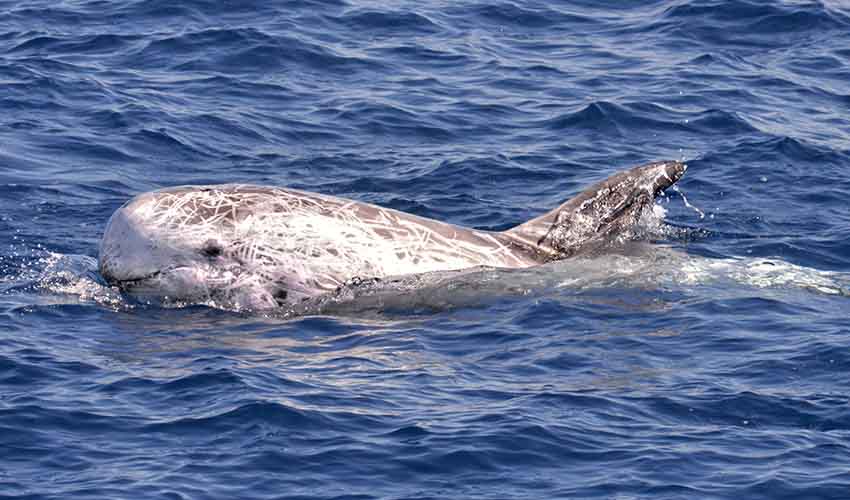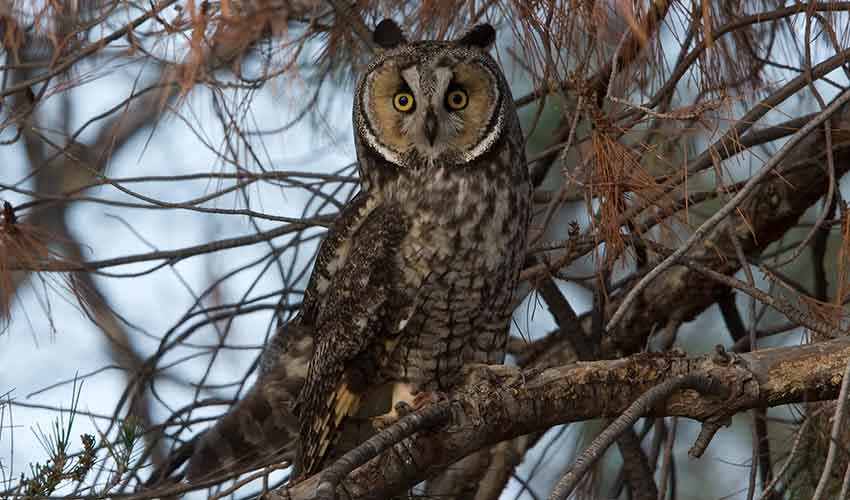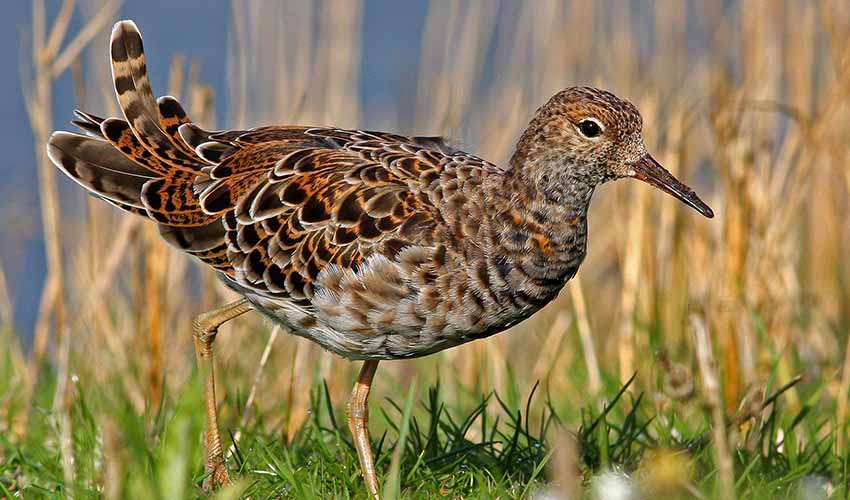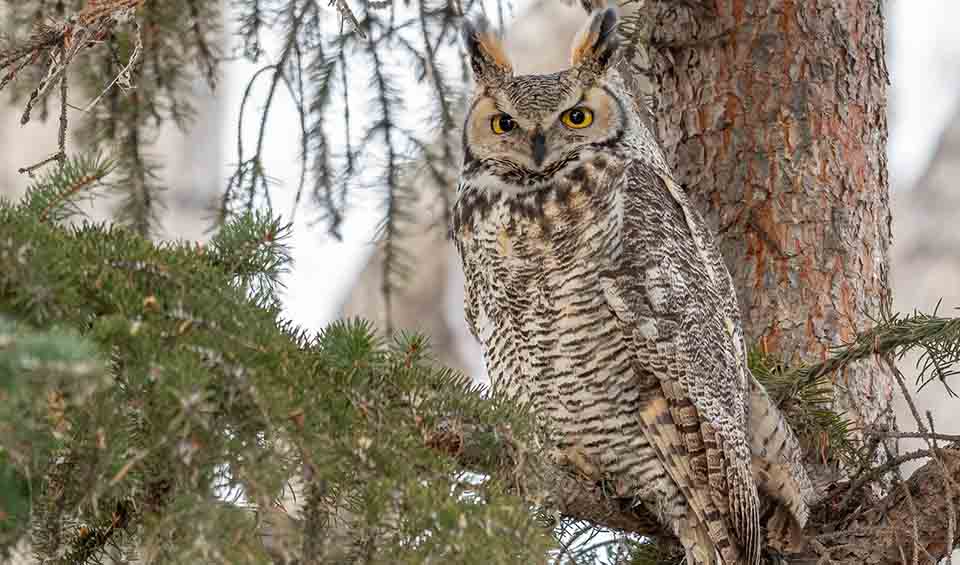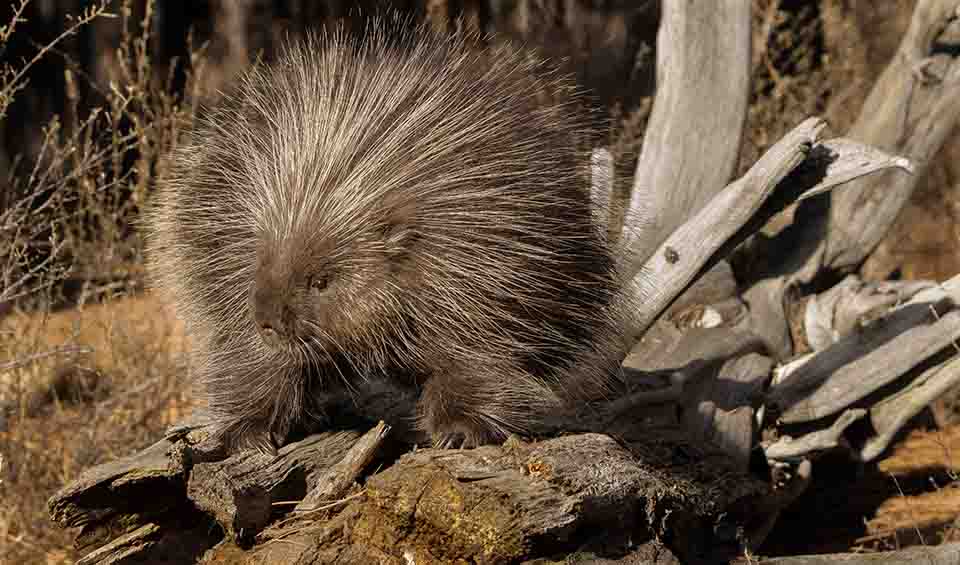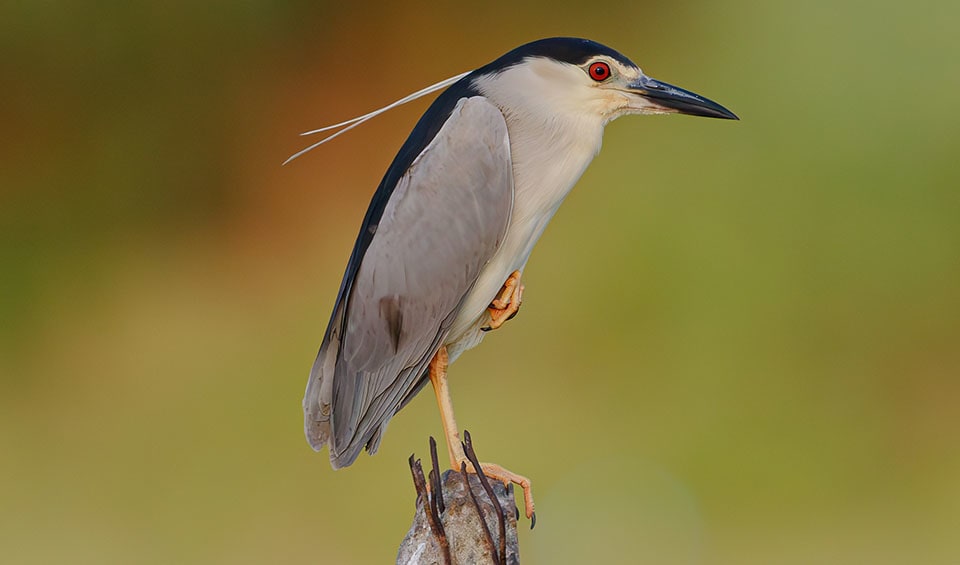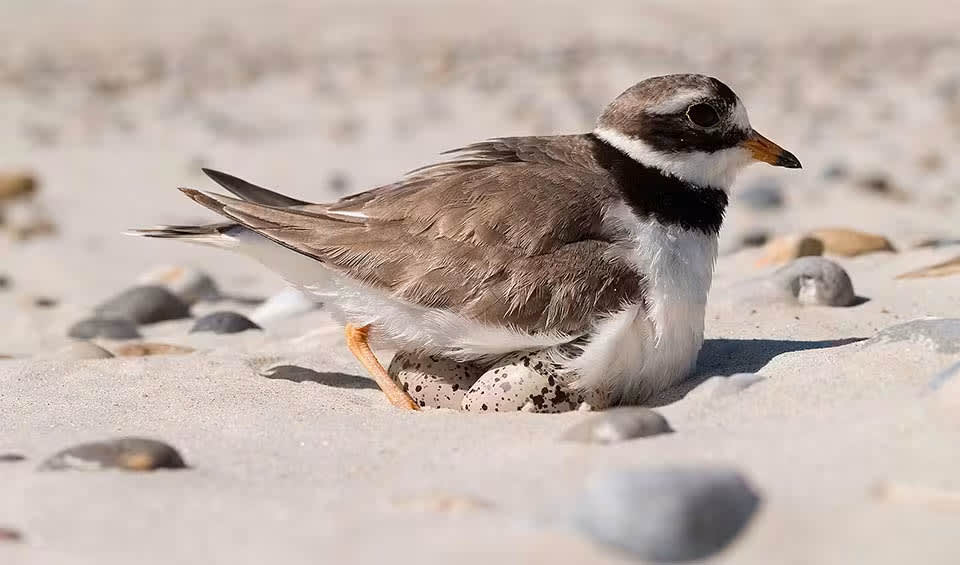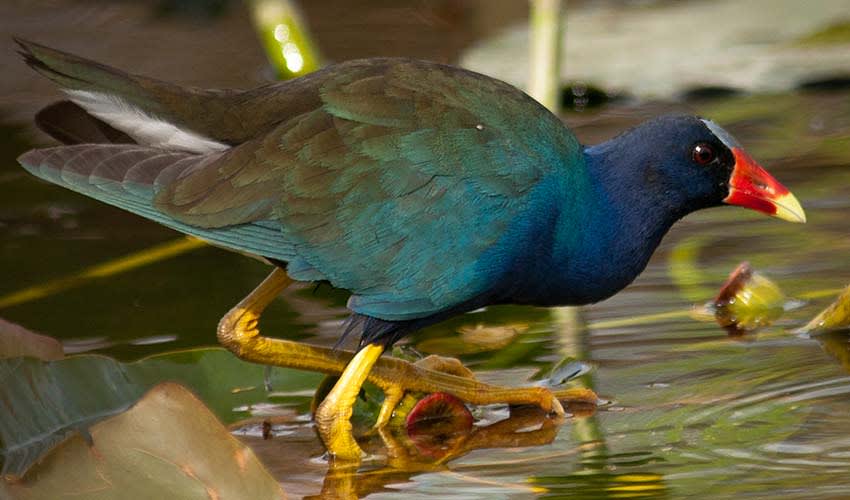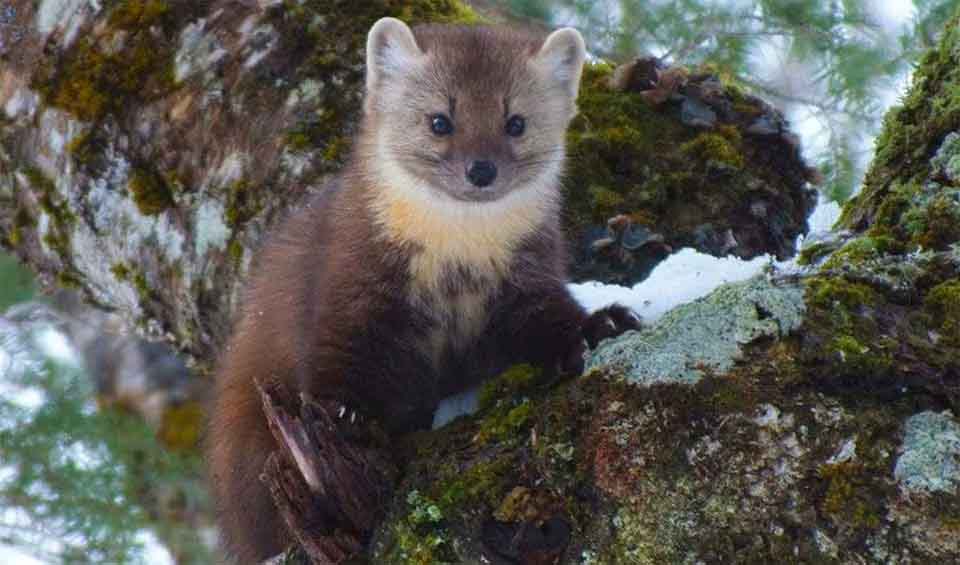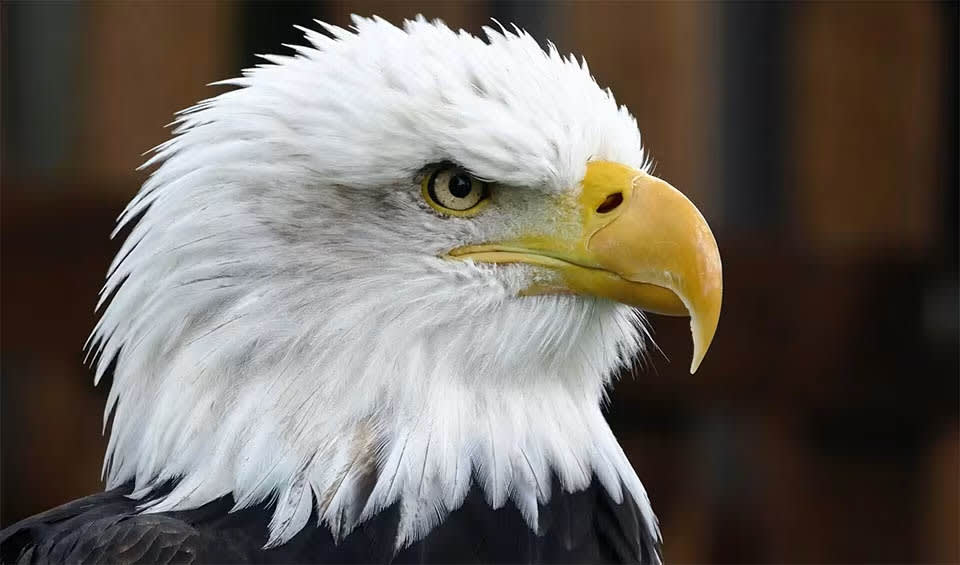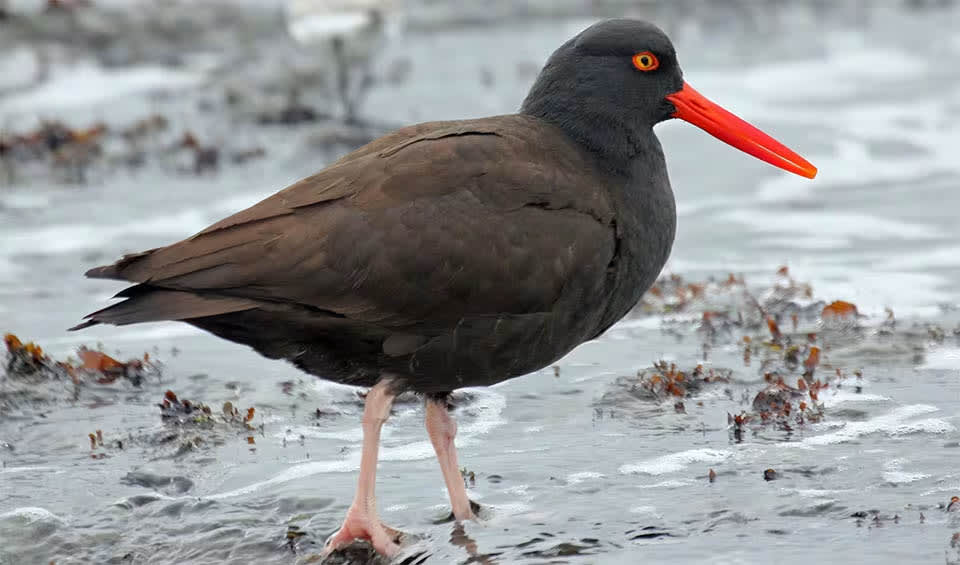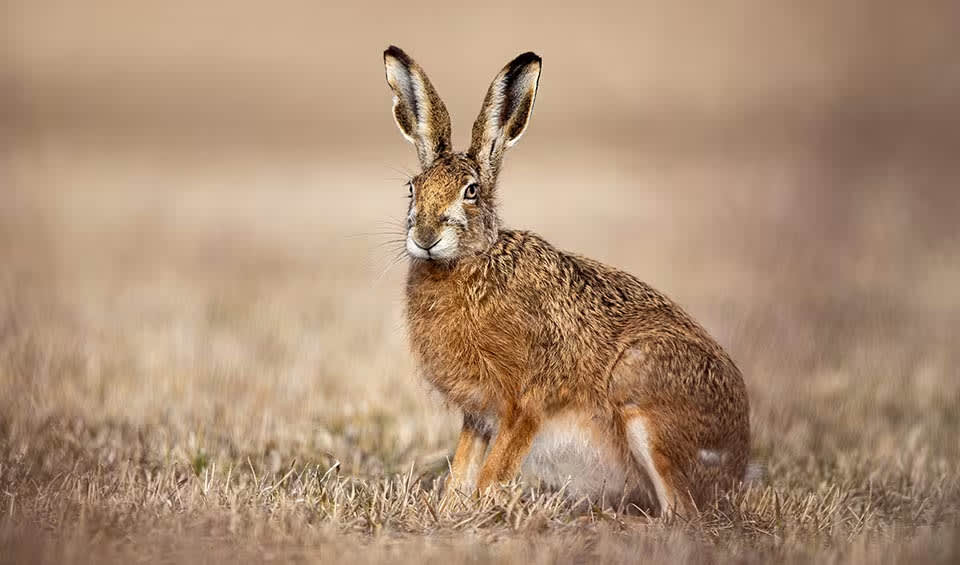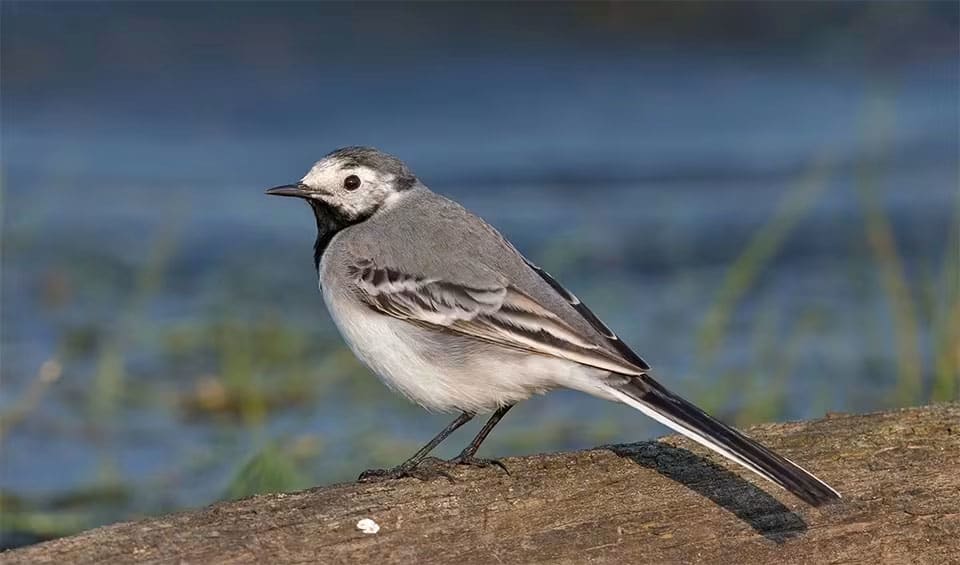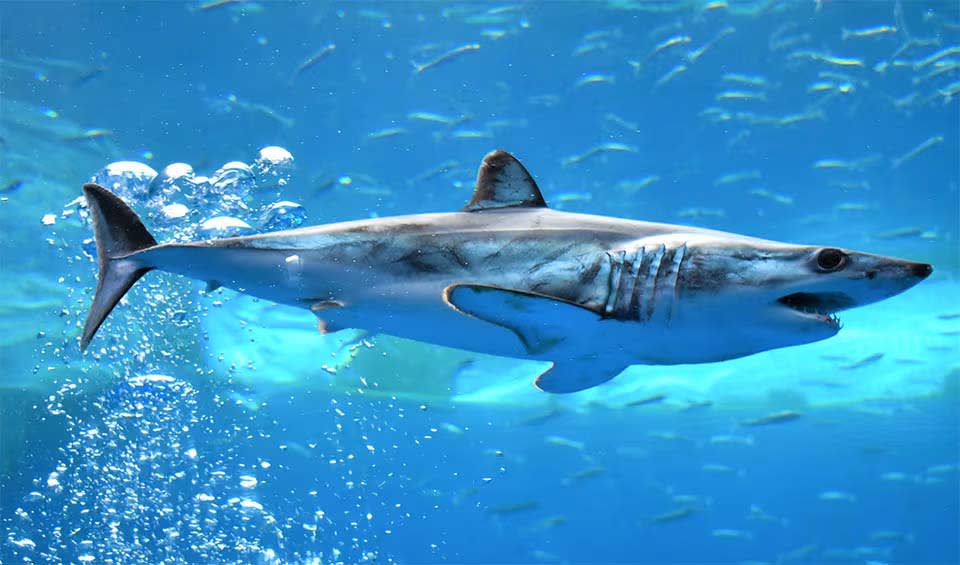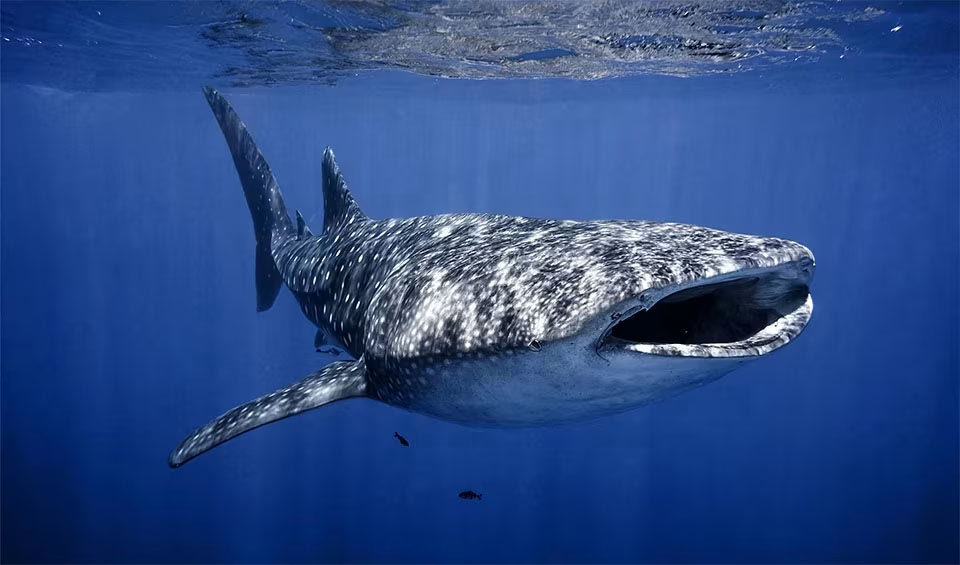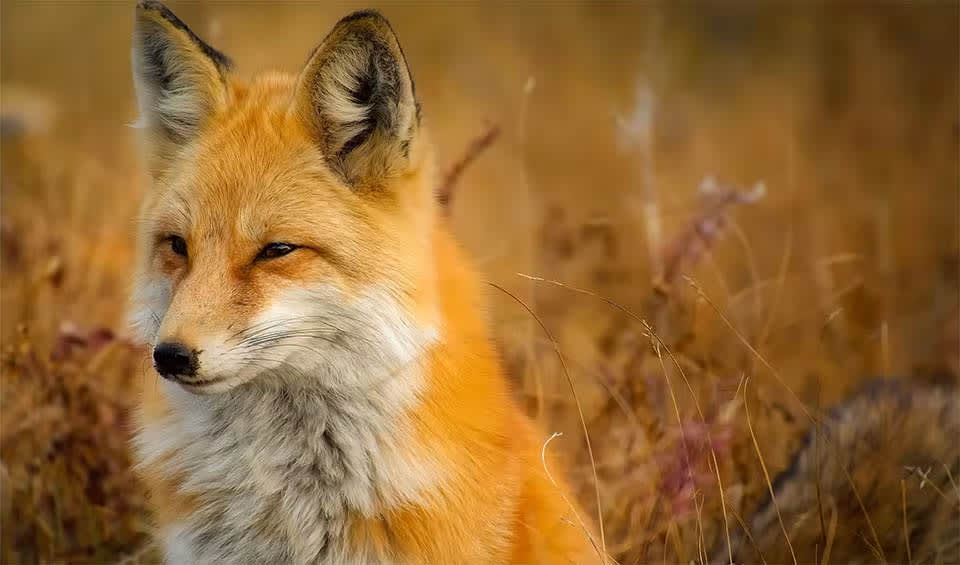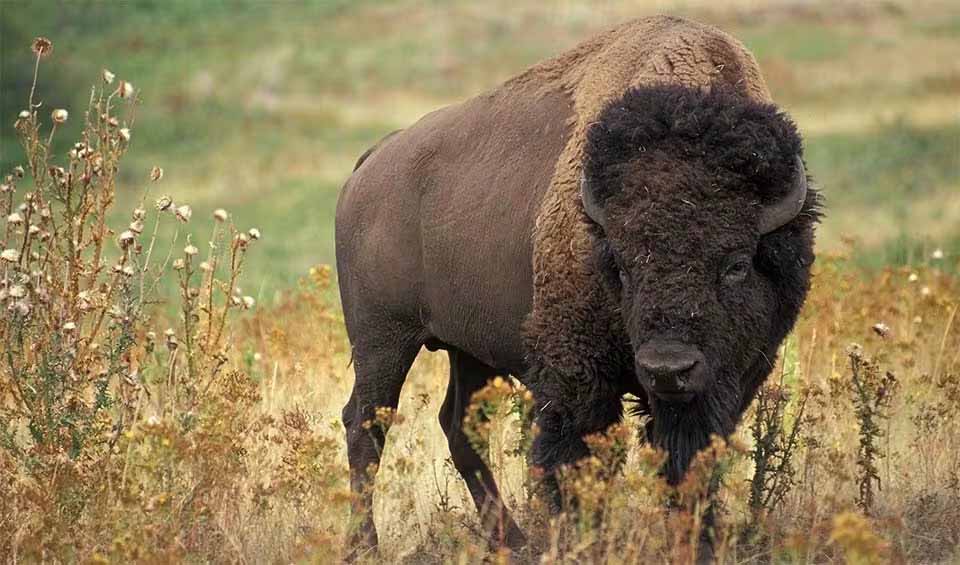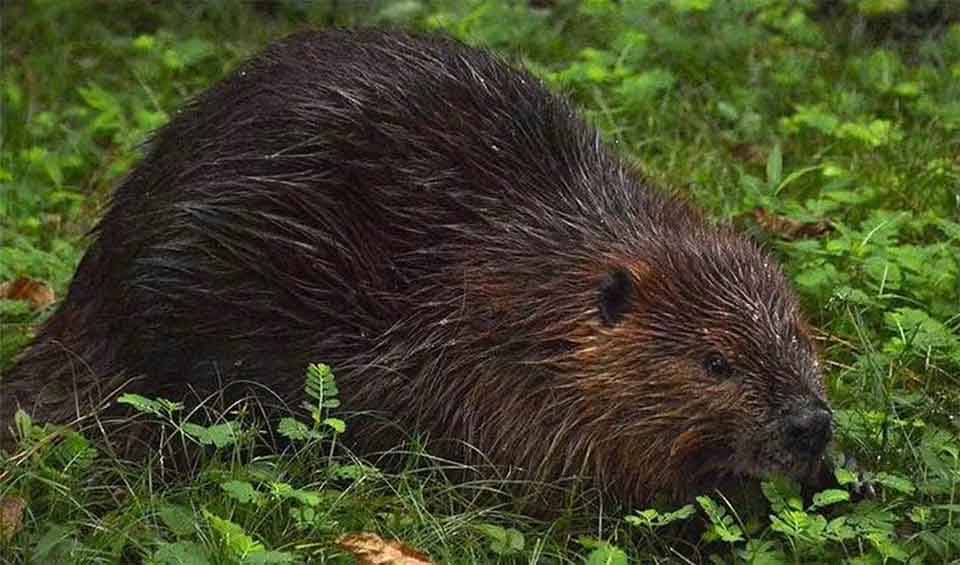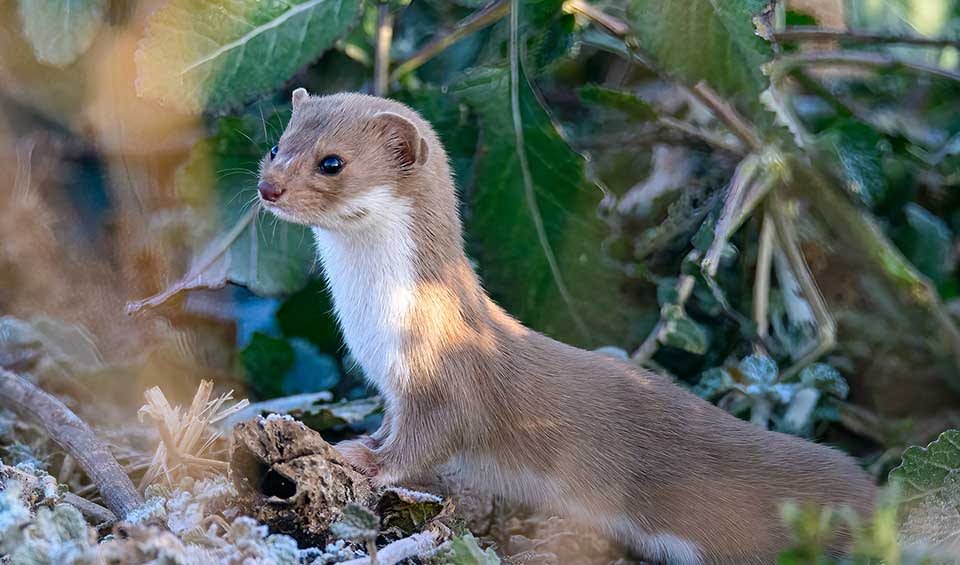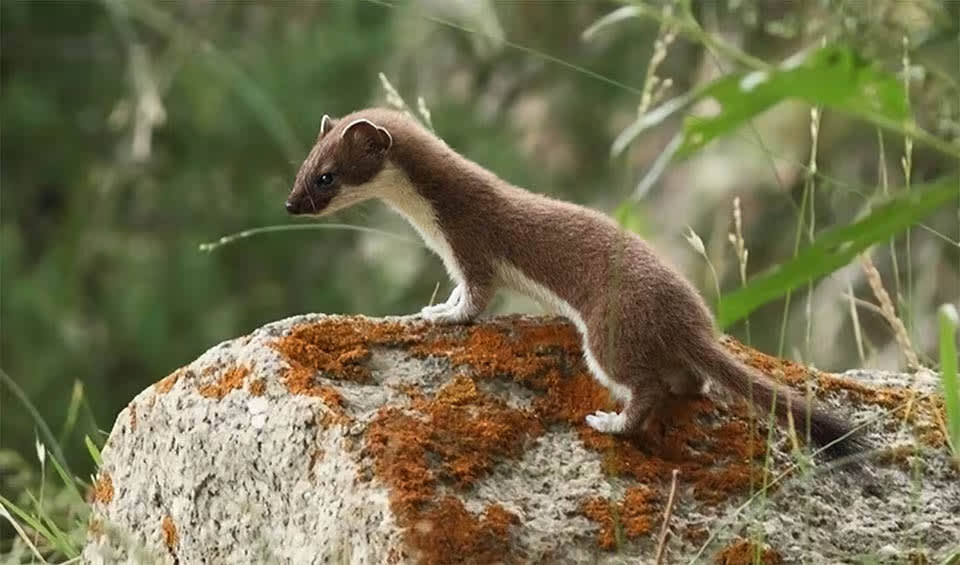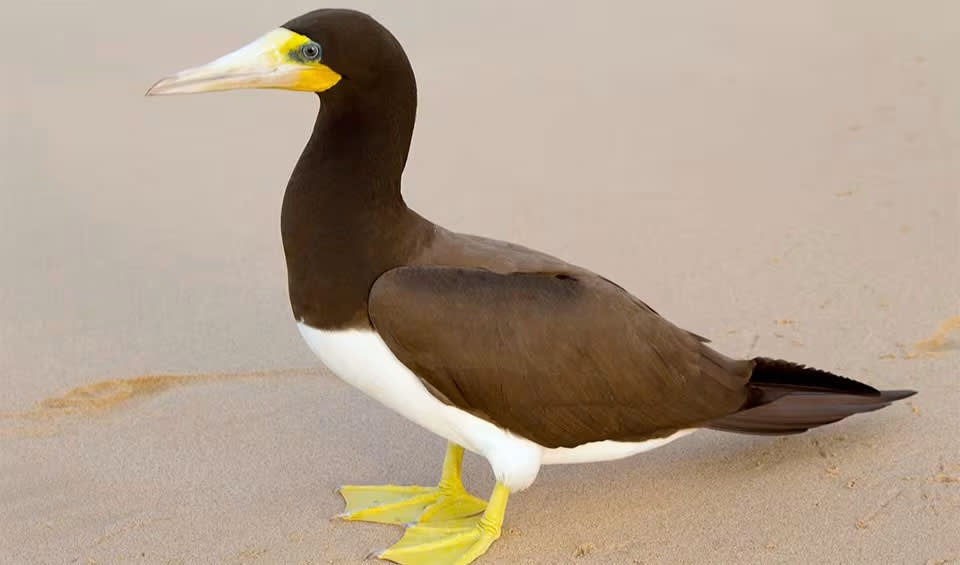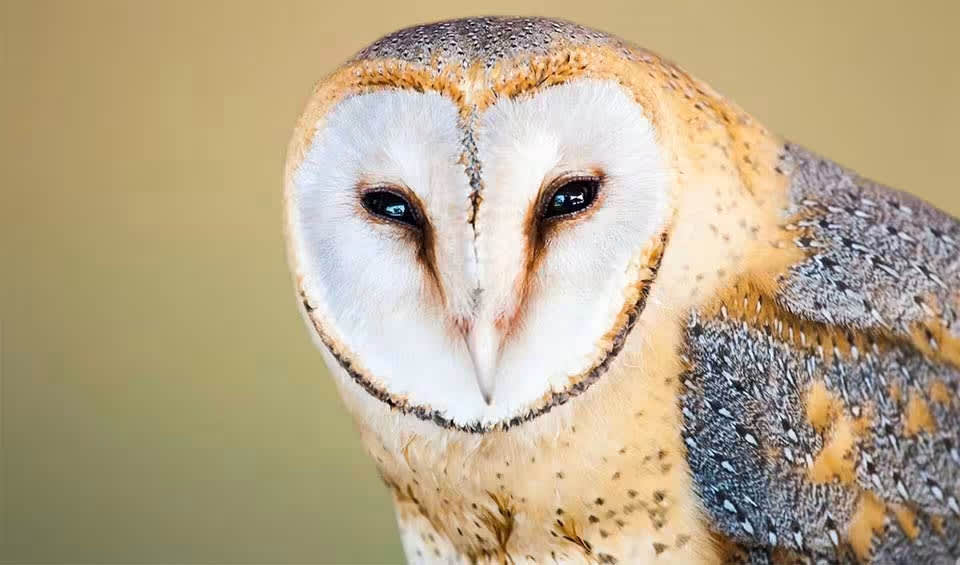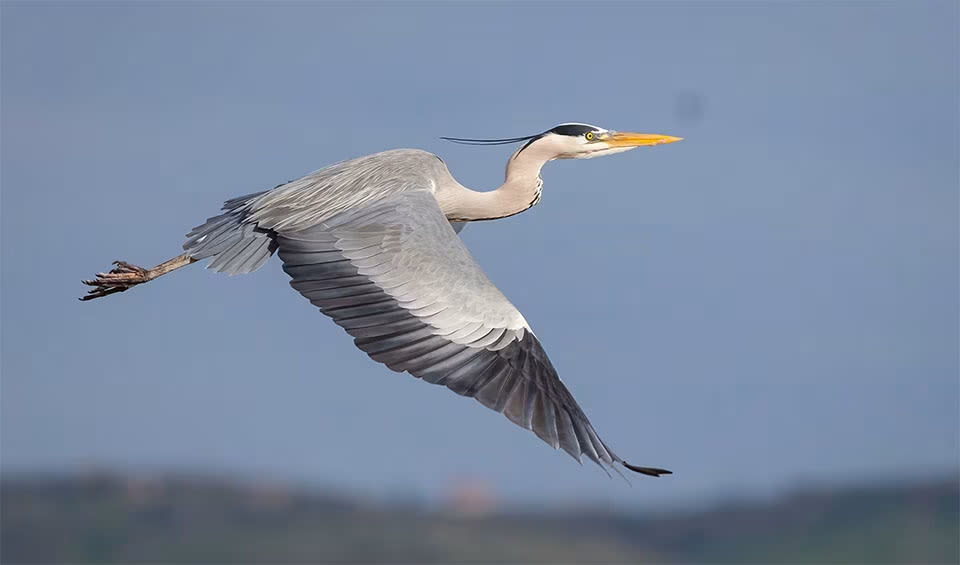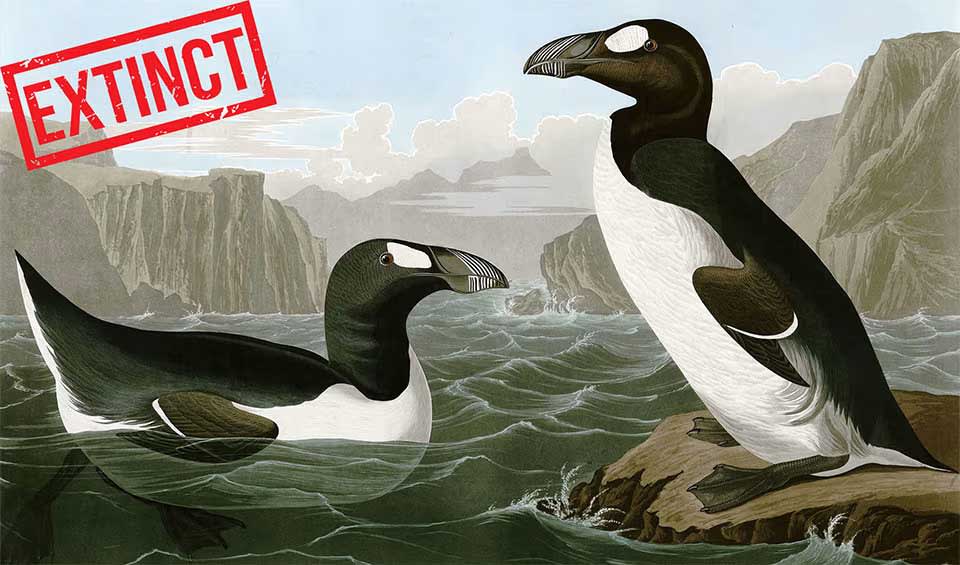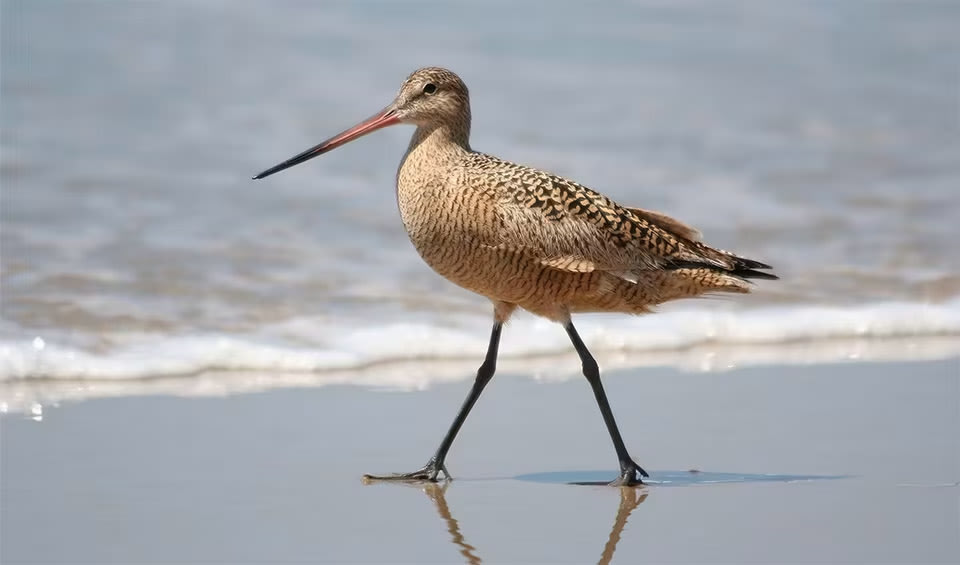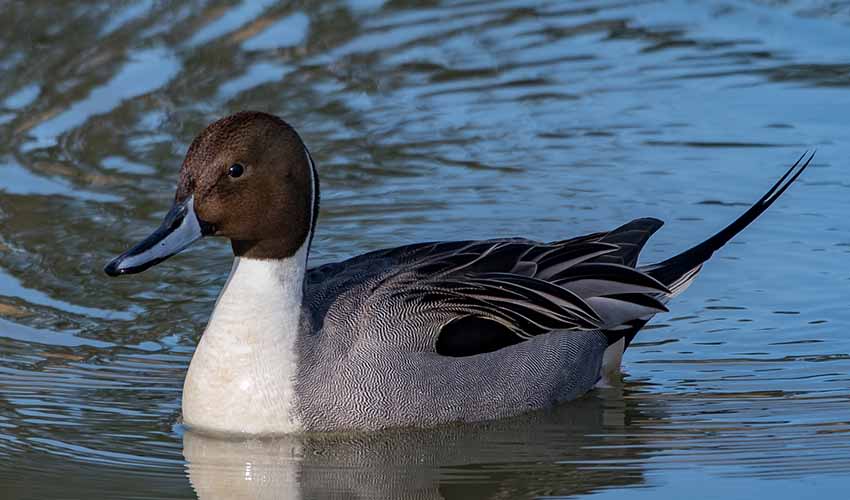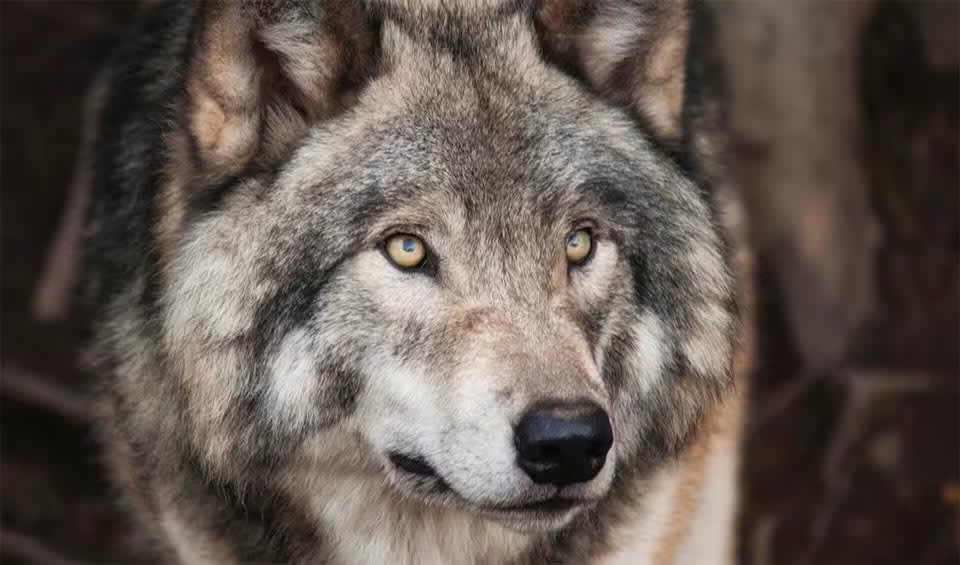Search for Canada
Bobolink
Symbols of open summer fields and joyful wild song
Indigo bunting
Under certain angles, the feathers can look almost black
Northern gannet
Superb gliders and can travel hundreds of kilometers in a day, riding winds with barely a wingbeat
Caspian tern
A heavyweight champ — elegant, yes, but you don’t want to mess with that beak
Red-backed salamander
So numerous that their total biomass (combined weight) can actually exceed that of all the birds and small mammals in the area
Four-toed salamander
Its tail is noticeably constricted near the base, almost as if it were designed to break off easily
Spring salamander
When hunting, it uses its sticky, projectile tongue to snatch prey with lightning speed
Northern saw-whet owl
Its eyes make up nearly half the size of its skull, giving it excellent night vision but little room for movement
Blanding’s turtle
Often described as the “smiling turtle” — and for good reason
Common box turtle
Known to eat mushrooms that are toxic to humans without any ill effects
Spotted turtle
Can live for more than 50 years, and some have been known to reach 100!
Striped dolphin
Among the most athletic dolphins, known for their spectacular leaps and spins that can reach several meters high
Risso’s dolphin
Sometimes called the “scars in the water” thanks to their many white markings
American redstart
One of the most admired warblers across the continent
Long-eared owl
Its flight is nearly soundless, thanks to specially fringed wing feathers that disrupt air turbulence
Short-eared owl
Defies the usual “creature of the night” stereotype by thriving in open landscapes and often hunting boldly in daylight
Northern collared lemming
Have curved digging claws on their front feet that actually grow longer in winter
Mule deer
Their ears are about three-quarters the length of their head
Northern flying squirrel
Capable of ultrasonic communication, producing sounds that are too high-pitched for humans to hear
Mountain beaver
One of the only mammals that can twist their ankle joints around almost completely
American mink
Part hunter, part opportunist, part invader
Razorbill
Spend most of the year out on the open ocean, far from land, only returning to cliffs to breed
Sand martin
A bird that carries the rhythms of the seasons on its wings
Crested auklet
The crest size actually matters—the longer, curlier crests are more attractive to potential mates
Rhinoceros auklet
It’s horn isn’t bone or keratin like a rhino’s horn—it’s actually a keratinized sheath that grows only during breeding season
Spoon-billed sandpiper
One of the rarest birds in the world with feathers that change color depending on the season
Ruff
Looks ordinary—but transforms into one of the most extravagant birds during breeding season
California quail
Their cheerful calls, often described as sounding like they are saying “Chi-ca-go!”
Taurus scarab
Guinness World Record holders among animals for “strongest relative to body weight”
Oregon spotted frog
Small, shy, and perfectly tuned to warm, weedy wetlands
New England cottontail
Needs a special kind of home: young forest and dense shrubs
Northern bottlenose whale
Despite the name, it’s a beaked whale—not the famous bottlenose dolphin
Bearded seal
Each whisker is packed with nerves, so they can “feel” food hidden in mud without seeing it
Little brown bat
Gentle, harmless, and incredibly important to both ecosystems and agriculture
Wood stork
The “giant of the swamp”
Tropical kingbird
Surprisingly aggressive for a bird with a sunny name
Turkey vulture
A bird that quietly keeps the environment clean
Atlantic salmon
Travels with nature’s GPS: a magnetic compass and a nose that never forgets home
Grey seal
Researchers once mistook their eerie underwater noises for a submarine!
Snowy owl
There is more to this species than its majestic coat of thick white feathers and piercing yellow eyes
Great horned owl
Often called the “tiger of the sky” because of its fierce hunting skills and bold personality
Ruddy turnstone
They flip the script — literally!
North American porcupine
If they feel cornered, they’ll stomp their feet, rattle their quills, and even release a funky smell as a warning
Vancouver Island marmot
Holds the unfortunate title of being one of Canada’s most endangered mammal
Groundhog
Yes—the very same ‘woodchuck’ from the famous tongue twister
Hoary marmot
They have a serious “fat race”
Black-crowned night heron
One of the most widespread and adaptable herons in the world
Yellow-crowned night heron
Crabs make up over 90% of their diet
Redwing
In Iceland, its arrival is eagerly awaited as it signifies the end of the harsh winter
Midget faded rattlesnake
One of the smallest species of rattlesnakes in North America, hence the name “midget”
Plains pocket gopher
Surprisingly feisty — using their strong teeth to defend their burrows from intruders
Laughing gull
Once you’ve heard them laugh, it’s hard to forget!
Timber rattlesnake
One of North America’s most formidable snakes, known for its long fangs and potent venom
Short-tailed albatross
For decades, it was thought to be virtually gone, until a small breeding colony was rediscovered
Royal tern
These birds ride ocean breezes for miles without flapping much at all
Wood turtle
They’re soaking up UV rays that help them process calcium for strong shells
Common ringed plover
This bird taps its feet to imitate rain to make the prey reach the surface
Whooping crane
The tallest bird of North America- saved from the brink of extinction, with less than 20 left in the ’40s
Arctic hare
Despite often being called an Artic Rabbit, it is a species of hare, not a rabbit
Blue-spotted salamander
You’re most likely to spot one after a spring rain
American kestrel
The smallest of falcons in the entirety of America, but you would be mistaken to take this bird lightly
Cooper’s hawk
With its keen eyesight, or darting through the trees in pursuit of prey, it embodies the precision and power of nature’s predators
Common blackbird
Arguably among the most beautiful songbirds in the world — they enjoy singing after a rain shower
Common crane
The flocks of this social and gregarious bird are fond of migration, flying over the horizon and creating a V-shaped formation
Goosander
Its long, serrated beak, often called a “sawbill,” is perfectly adapted for catching slippery prey like fish
California sea lion
The most intelligent of all sea lion species; trained for use by the United States Navy
Purple gallinule
One of the most dazzling waterbirds of the Americas, often described as a “swamp jewel”
European starling
Brilliant mimics, they can copy bird calls and even human-made sounds like car alarms and ringing phones!
Pond slider
Got their name from their ability to quickly slide off logs or rocks into the water when they feel threatened
Milk snake
Named after their habit of hanging around barns, where cows were often kept
American pine marten
Females can postpone embryo development up to 200 days, and the pregnancy only lasts about 28 days
Lesser black-backed gull
A common sight in coastal regions throughout the Northern Hemisphere
Black guillemot
Can withstand harsh winter conditions, often remaining at sea even when the water is frozen
Black-necked grebe
Unlike many birds, their chicks can swim and dive just hours after hatching
Bald eagle
The magnificent national bird of the United States, distinguished by a snowy white head, neck, and tail
Common watersnake
Often mistaken for its venomous cousin, the cottonmouth
Muskox
A big, furry animal that looks like a mix of a cow and a sheep, living in one of the coldest places on Earth
Rock ptarmigan
A bird that can change its color to match its surroundings!
Northern cardinal
The state bird of seven U.S. states—more than any other bird
Muskrat
They’re kind of like big, furry rats but with a different shape
Brown pelican
The smallest of the eight pelican species
Groove-billed ani
Got a long tail, a big head, and a curved bill with little grooves on it – that’s where its name comes from
Eastern racer
Even though they might look scary, they’re actually harmless to people and often attempt to flee rather than fight
Black oystercatcher
Don’t let their name fool you; they actually prefer to eat mussels and limpets rather than oysters!
Red-headed woodpecker
Unlike other woodpeckers, this bird loves to catch bugs in the air, not just from trees
Common pochard
Can dive down to the bottom of a lake and rest there, safe from predators!
Eurasian skylark
They might not look like much, but they have an incredible talent: singing!
Sharp-tailed grouse
It’s a bit like a chicken, but with longer, pointed tail feathers
Great grey owl
One of the biggest owls in the world, but don’t let its size fool you – it’s actually quite light!
Greater sage-grouse
Love to eat sagebrush, which gives their feathers a unique smell that helps them stay safe from predators
Black-footed ferret
Often seen engaging in antics that include hopping sideways and backwards, a behavior known as the “ferret dance”
Hooded seal
Only males possess a unique, inflatable, balloon-like nose that they can inflate into a large red shape
European hare
Unlike rabbits, they don’t live in burrows, instead, they make shallow nests in the grass called forms
Barn swallow
Most common and widely distributed swallow globally
Northern lapwing
Very active and noisy, with a loud, piercing call that sounds like “pee-wit”
Pacific tree frog
A small, green friend you might find hopping around in gardens, forests, or even your backyard
Common snapping turtle
Unlike the smooth shells of most turtles, its carapace is ridged and gnarled, resembling a piece of ancient armor
Llama
Think of camels, but minus the hump!
Burrowing owl
They don’t build their own nests – they cleverly take over burrows abandoned by prairie dogs, ground squirrels, or even tortoises!
Common bottlenose dolphin
Known for their acrobatic leaps, twisting and turning gracefully as they jump completely out of the water
American flamingo
Famous for its habit of standing on one leg
Mute swan
Known for their graceful movements and the distinctive “S” shape of their neck
Snowshoe hare
Climate change is creating “white hares on brown ground”
White-tailed jackrabbit
Can leap more than 5 meters (15 feet) in a single bound when startled
Trumpeter swan
The largest species of Waterfowl present in America
Five-lined skink
Can detach their tails when threatened by predators
Canada jay
Known for their excellent memory, allowing them to relocate hundreds of food caches even months after hiding them
Common pheasant
One of the most hunted, widespread, ancient, and well-known game birds
American bullfrog
Introduced to many regions where it is now considered an invasive species
Sandhill crane
Known for their elaborate courtship dances, which involve leaping, bowing and trumpeting
Western toad
Can tolerate colder temperatures better than many other amphibian species
Little egret
During breeding, they transform with elegant white plumage, adorned by decorative plumes on the head, neck, and back
White wagtail
Holds cultural symbolism in some societies, representing good luck
Eurasian kestrel
Adaptable raptor known for its hovering hunting technique and striking appearance
Snowy egret
In the late 1800s, a single ounce of its feathers could be worth more than gold
Shortfin mako shark
Speed and power embodied, they rule the seas with their sleek bodies and jaw-dropping leaping prowess
Basking shark
Majestic giants of the sea, they peacefully glide through the ocean with mouths agape, filtering the waters for sustenance
Whale shark
Gentle giants of the sea, with mouths wide open to filter the ocean’s bounty
Great white shark
Majestic ocean predators, embodying power, speed, and precision in their pursuit of prey
Kemps ridley sea turtle
Meet the smallest and rarest sea turtle in the world
Woolly mammoth
The smallest of the giants: the largest European mammal during the last ice age, yet smaller than their earlier ancestors
Arctic fox
Facing the consequences of global warming, they quickly lose their habitat and are pushed northward with the receding cold
Red fox
Ladies and gentlemen, please welcome the world’s most widely distributed carnivore!
Bobcat
Also called the red lynx, it is the most common wild cat in North America
Swift Fox
Swift by name, swift by nature – this little fox is a real speedster!
Canada lynx
A powerful hunter with adaptations like no other, navigating the snowy terrain of North America’s forests
American bison
Hunted almost to extinction, they were the first species to be reintroduced to nature
Bighorn sheep
The iconic species of the North American mountains
Dall sheep
Their horns come in handy during mating season and as a line of defense against wolves and bears
Polar bear
Living life on top of the world, but his kingdom is ever-narrowing
American black bear
America’s smallest and most widely distributed bear, endemic to North America
Brown bear
The second largest bear, right after the polar bear. Sadly, it well might top the list soon
Fox squirrel
They “tail talk”—they flick or wave their fluffy tails to signal alarm, aggression, or even to distract predators
North American beaver
To be or not to beaver? Beavers are armed with transparent eyelids that act as goggles to see underwater
Anhinga
Their neck vertebrae have a hinge mechanism that allows it to dart its long neck and pierce its prey quickly
Least weasel
The smallest carnivorous predator in the world and so have limited fat stores and need to eat more than 50% of the body weight
Long-tailed weasel
Uses a hunting technique known as the Weasel War Dance that involves a series of frenetic turns, manic twists, and jumps to confuse the prey
Stoat
A small, fierce predator known for its agility, hunting skills, and color-changing fur
Great cormorant
Due to their adaptability and willingness to migrate to more favorable habitats, great cormorants are found worldwide
Brown booby
An impressively acrobatic bird that can catch flying fish mid-jump
Barn owl
The most cosmopolitan of owls with home ranges extending across the globe
Manx shearwater
Impressive flights but clumsy walking on the ground are observed in these birds due to awkward legs
Red-tailed tropicbird
They dance along with their gorgeous red tails to attract partners in a faithful courtship
White-tailed tropicbird
These ocean wanderers can be spotted from a distance showing awe-inspiring aerial tricks
Glossy ibis
These birds seem to have lost their way to the beauty pageant
Gray heron
Exhibit powerful flight, with distinctive slow wing beats and an extended neck, defining features during their aerial movements
House sparrow
The most widely dispersed wild bird
Scarlet flycatcher
The scarlet ambush hunter
Eurasian coot
Like those bulging red eyes weren’t scary enough, they eat their innocent chicks when hungry
Limpkin
They don’t need salt, bamboo sticks, or forks to deshell a snail – they have a well-adapted bill to do the job
Mountain quail
The dramatic head plume sticks straight when alert or agitated (it’s not a wifi router, guys)
Willow ptarmigan
Most common of the Galliformes in the wild habituating subarctic Tundra can tolerate brutally cold winters
Wild turkey
Heaviest member of the order Galliformes, agile and fast fliers with good eyesight during day and poor vision at night
Red-throated loon
One of the earliest waterbirds to begin nesting in the Arctic spring, sometimes before ice fully melts
Chukar partridge
The national bird of Pakistan and Iraq is known to improve degraded ecosystems by aiding in the dispersal and germination of seeds
Dusky grouse
The third largest grouse in North America is known for their shortest bird migration and resides permanently in an area they hatch
Gyrfalcon
Largest of falcons: can grow up to 60cm (2 ft) in height
Merlin
The pocket-sized falcon with an eagle’s attitude
Peregrine falcon
At the speed of over 321 km/h (200 mph), this bird outraces a Formula1 car
Black-winged stilt
Elegant long-legged wader, common almost worldwide
Great skua
Jack Sparrow of the bird kingdom
Common murre
The penguins that can fly
Least auklet
One of the most abundant birds in the world, which can eat up to 90% of its body weight in a day
Parakeet auklet
Despite its comical looks, its bill is perfectly adapted for handling soft-bodied prey
Great auk
Last of these beautifully glossy, black and white birds were hunted in 1844 off the coast of Iceland
Atlantic puffin
This incredible bird can hold up to 30 fish in its beak at once
Tufted puffin
Try as you might, you will never find a hairstyle better than this bird’s
Common tern
This bird holds the record of the longest distance flown by any bird in recorded history
American woodcock
This incredible bird can feel the vibrations made by a worm to find it and consume it
Black-tailed godwit
The most elegant of all godwit species
Bar-headed goose
These hardy birds are capable of flying at dizzying heights, where even helicopters can’t fly
Wood duck
The red-eyed hipsters of the duck world
Mallard
This invasive species is the ancestor to most of the modern ducks
Northern pintail
Have been recorded at altitudes over 16,000 feet during migration—almost as high as small airplanes!
Golden eagle
This majestic brown raptor is most widely distributed eagle species
Ferruginous hawk
The world’s largest soaring hawk, perfectly suited to the open skies and remarkably unafraid of humans often in close proximity
Red-tailed hawk
One of the most common raptors across North America
Osprey
One of only six land-birds with a cosmopolitan distribution habituating all continents except Antarctica
Harp seal
Named after the black, curved marking on their backs that resembles a harp!
Harbor seal
Slows the heartbeat from 80 bpm to 3-4 bpm before a deep dive; quickly accelerates after surfacing
Steller sea lion
They are able to hold their breath for as long as 40 minutes, and the deepest dive ever recorded is 424 m (140 ft)
Northern fur seal
Able to spend long periods out in the open sea, some pups will stay up to 22 months before returning to land
Walrus
Tusked marine mammals heralding climate emergency!
Dall’s porpoise
Largest and fastest of all porpoises; they look like a black & white blur as they shoot past
Narwhal
Their large ivory tusk which is a protruding canine tooth of the male makes them The ‘unicorns of the sea’
Beluga
Known as the “canaries of the sea,” due to their wide range of sounds
Gray whale
Once called ‘devil fish’ by whalers due to their fighting behavior when hunted
Bowhead whale
They hold the title of heaviest animals, weighing about 100,000 kg
North Atlantic right whale
Believed to be only seen by scientists for 50 hours in the last 50 years
North Pacific right whale
The rarest of all large whales and among the rarest of all the marine mammal species on earth
Star-nosed mole
The star-like tentacles on the nose are not just for looks; they can detect electrical fields to locate their prey
Virginia opossum
“Play possum” when being attacked by remaining still, having the tongue hangs out, and do not blink, making the predator to lost interest
American pika
Although looking like a mouse, they are the smallest member of the rabbit family
Raccoon
‘Raccoon’ comes from ‘arakun’ meaning ‘he scratches with hands’ in Algonquin Indian
Striped skunk
As if aware of how horrible the odor of their spray is, they don’t spray in confined spaces or dens
Fisher
Despite their name, they rarely eat fish; instead, their primary prey is porcupines and snowshoe hares
Wolverine
Once wolverine was once observed defeating a polar bear
American badger
They are almost blind, but they have a perfect sense of smell and hearing to make up for that
North american river otter
They can close their nostrils during diving and staying underwater for as long as 8 minutes
Sea otter
They can sleep in the sea by lying on their backs and floating on the surface of the water
Cougar
The most widespread large mammal of the Americas: from Canada’s Yukon to the Andes in South America
Gray fox
While still widespread throughout North & Central America, habitat loss and deforestation allowed the red fox to become more dominant
Coyote
They can even sometimes reproduce in huge numbers, which becomes necessary to be regulated as they also carry many diseases, including rabies.
Wolf
The howl of each wolf is different
Mountain goat
Despite their name, mountain goats are not goats —but antelopes, known more properly as goat-antelopes
Reindeer/Caribou
Males drop their antlers before Christmas, but females keep their antlers until spring
White-tailed deer
We use our agility and speed to outrun their predators, sprinting up to 48.2km/h (30 mph) and leaping as high as 3m (10 ft)
Elk
Clashing with their antlers, the winner takes it all!
Moose
They are so tall, that they prefer to feed on higher shrubs and grass, as lowering their head to the ground can be difficult!
Pronghorn
The fastest land mammal in the Western Hemisphere can run at speeds of up to 89 km/h (55 mph)
Leatherback sea turtle
The mysterious diver of the ocean is the largest and only sea turtle without a hard shell and scales
Common musk turtle
A small freshwater turtle is known for its unpleasant smell
Spiny softshell turtle
A turtle with a soft leathery shell and a pointy snout
Greater short-horned lizard
Often called horned toads, these lizards are nowhere closely related to amphibians
Common garter snake
Most common, most versatile, widely distributed, and most familiar of all the North American snakes
Tiger salamander
One look at the “tiger stripes” on this salamander, and you’ll see where it got its name












